It’s Garden Wildlife Week, here are 10 Top Tips to help you make the most of it and to help wildlife all year round – not just in June!
1. Say goodbye to a (completely) manicured lawn
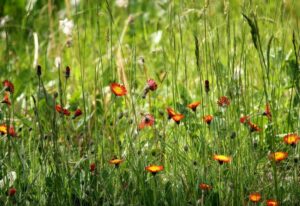
A manicured lawn is quite an aspiration for some and they’re a fairly common feature in homes across the UK, but for wildlife they are the equivalent of deserts!
Taking part in No Mow May and mowing less frequently is a great way of giving pollinators and wildflowers – which are both in decline – a boost when they need it most. Alternatively leave a patch permanently uncut and allow plants like daisies and buttercups to thrive. It will add a touch of colour to your garden as well as encouraging wildlife and you will be surprised at what native plants such as Yellow rattle will appear. You could also add some native wildflower seeds too if you wish.
We keep a section of our lawn shortish for entertaining and relaxing and then mow “paths” through the rest for easy access and allow the rest to grow on. We’ve been delighted at the increase in the number of different species of birds and insects we seen as a result including jays and many more greenfinches and chaffinches than we usually get, and the butterflies have been really lovely.
2. Feed wildlife
One of the easiest ways to encourage wildlife is to provide a source of food. Just a few bird feeders placed around your garden can be enough to encourage common birds, like robins and goldfinches, to stop by.
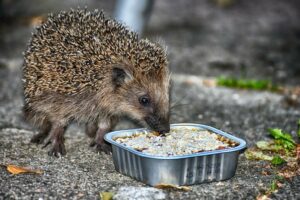
Place the bird feeders in or close to trees or other plants that will provide some cover so that birds feel safe using them. Squirrels will of course raid the feeders but while they are voracious eaters, their antics and intelligence are fascinating to watch.
Hedgehogs, foxes and badgers will eat fallen seed though it would be better if they didn’t of course! They will also co-exist generally in the garden despite fears of badgers eating hedgehogs – that tends not to be true.
Provide visiting hedgehogs with poultry or meat based wet cat food in JELLY (not gravy) – tinned food is better than pouches as the pouches are hard to recycle.
3. Create sources of water
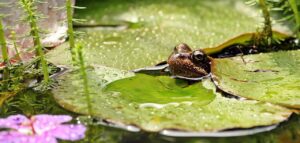
A reliable source of water can lead to far more birds and other animals enjoying your garden, especially during very hot weather. It will also help flying insects, so don’t forget to put a stone or pebble in each dish so they have somewhere to perch.
A small dish (shallow plant saucers are ideal) or birdbath will help if you don’t want a pond. That said, a small wildlife pond is easy to dig and maintain. Surround the water with plants to provide some cover and make sure there’s a ramp or gravel beach so animals can get out if they fall in.
4. Opt for hedges instead of fences or walls
If you’re updating the boundary of your garden, what you use will affect wildlife.
Hedges are the best option for nature – they can provide a space for animals to feed, shelter, and nest throughout the year as well as providing a food source. Hedges also mean there are more access points to your garden for animals like hedgehogs.
If you have a fence or wall, adding climbing plants can help make your garden more wildlife-friendly and leaving a 13 x 13 cms hole in your fence for hedgehogs to pass through will ensure that hedgehogs can roam freely. Hedgehogs can travel up to 3kms a night looking for food and a mate. So why not get together with your neighbours and make a Hedgehog Highway?
5. Plant shrubs and trees
Research has found that wildlife prefers gardens that have plants and shrubs. There are plenty of native options to choose from, including fruit trees that can become a food source.
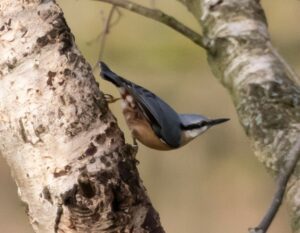
When planting trees choose one that suits your garden size and that the roots or branches will not damage your property. Silver birches are a popular option if you have a good-sized garden, while dogwood is suitable for smaller outdoor spaces. Hedges are also critically important and Hawthorn is a good choice along with Buckthorn, Holly and Dog Rose. Fruit trees are available in many sizes and have the dual benefit of giving you a food crop as well as helping wildlife.
6. Plant wildflowers
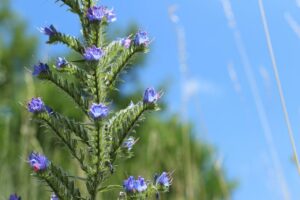
Encouraging wildlife doesn’t have to mean you have to give up your beautifully managed herbaceous borders, but setting aside part of your garden or outdoor space as a wild area is a realistic option for most gardeners.
Even a small corner or planter filled with native wildflowers will help – they’re easy to grow, are attractive to all sorts of insects, which in turn can attract birds and bats, and they can look pretty too. Great options are Lily of the valley, Oxeye daisy, Ragged robin, Betony, Viper’s bugloss, Wood anemone, Forget-me-nots and Foxgloves.
7. Grow blue and purple flowers
It’s a scientific fact that pollinators prefer blue and violet flowers. Flowers in the violet-blue range produce the highest volumes of nectar and as their end game is to get the bees, hover flies etc pollinating away on their behalf, they know what they’re doing.
There’s a lovely article here you might enjoy which includes a video of a bee collecting nectar from purple flowers and also a list of flowers by season to attract pollinators:
8. Add “homes” for wildlife
To encourage wildlife to make your garden their home, add a place where they can shelter and nest. An easy option is to make bird boxes, bug hotels, or hedgehog houses and feeding stations part of your garden’s design. Put up a bat box at around 2m height. If you’re quiet at dusk you can hear them moving around as they get ready to go hunting.
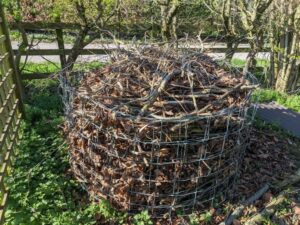
If you prefer a natural look, leaving a pile of wood or stones in a shady spot or creating a low maintenance rock garden can be just as effective. We used rolls of wire filled with fallen leaves, twigs and other natural detritus to make homes which were soon in use by hedgehogs. We also added corrugated iron pieces as a place for amphibians and reptiles to hide though the first one was used by field mice who built a nest beneath it. Learn how to makes homes for nature here.
9. Avoid harmful chemicals and choose sustainable products
Sustainability is a growing trend in gardening and one that can help wildlife too. Choosing products that don’t contain harmful chemicals, composting, or selecting garden furniture that’s made from natural materials are all steps you can take to make your garden as environmentally friendly as possible. Try Comfrey tea as a fertiliser and organic pest control such as natural predation and companion planting.
10. Make Compost
We waste an awful lot of food in this country. Enough to fill Wembley Stadium 9 times over each year. As all organic material can be composted then it makes sense not to throw food waste away. Better not to waste it in the first place of course, but inevitably there are peelings etc which could be recycled into fabulous peat-free compost via an outside bin or wormery or an inside Bokashi Box. Here are some top tips for composting and avoiding food waste.
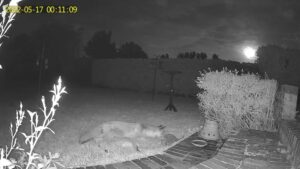
Finally, if you can, set up some cameras. You’d be amazed at what the wildlife gets up to in your garden when you’re fast asleep! This organisation is a not for profit whose aim is conservation through observation – we got our cameras from them.
Click on the photos to enlarge them!

